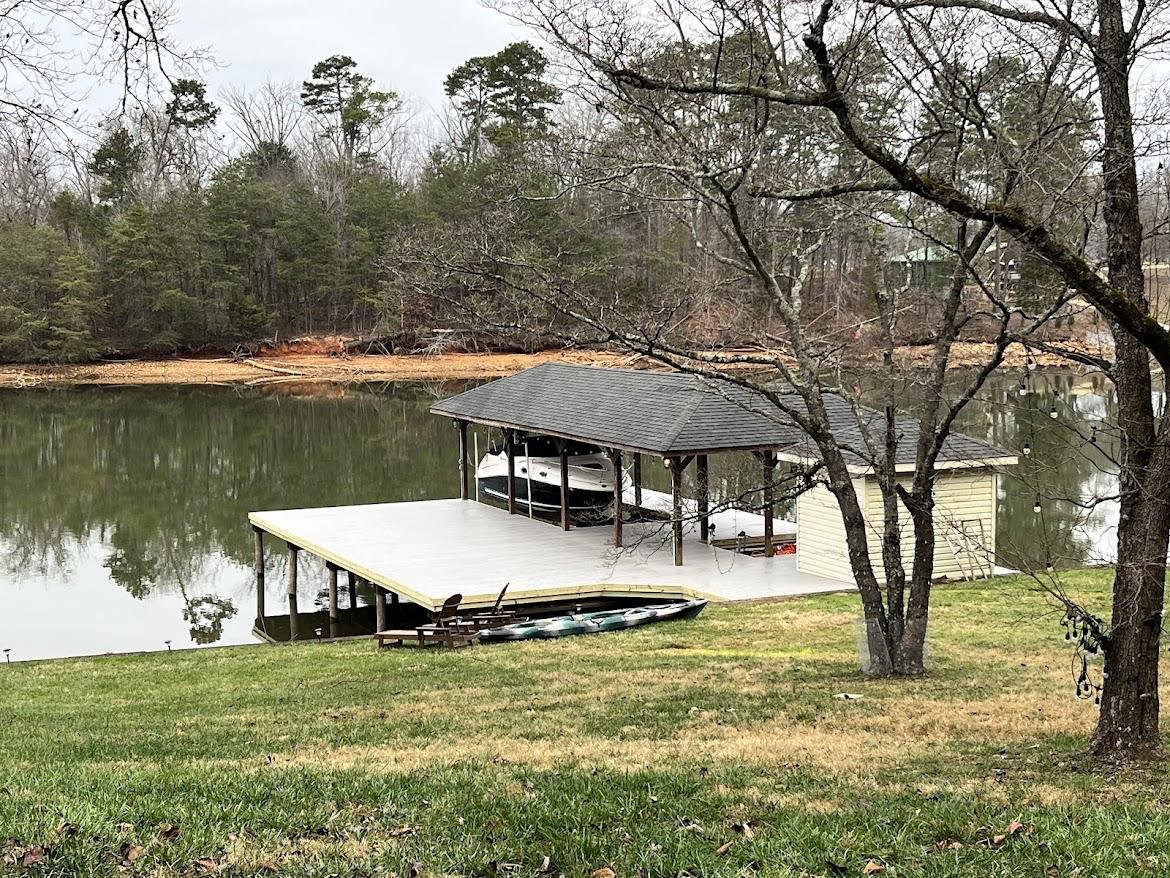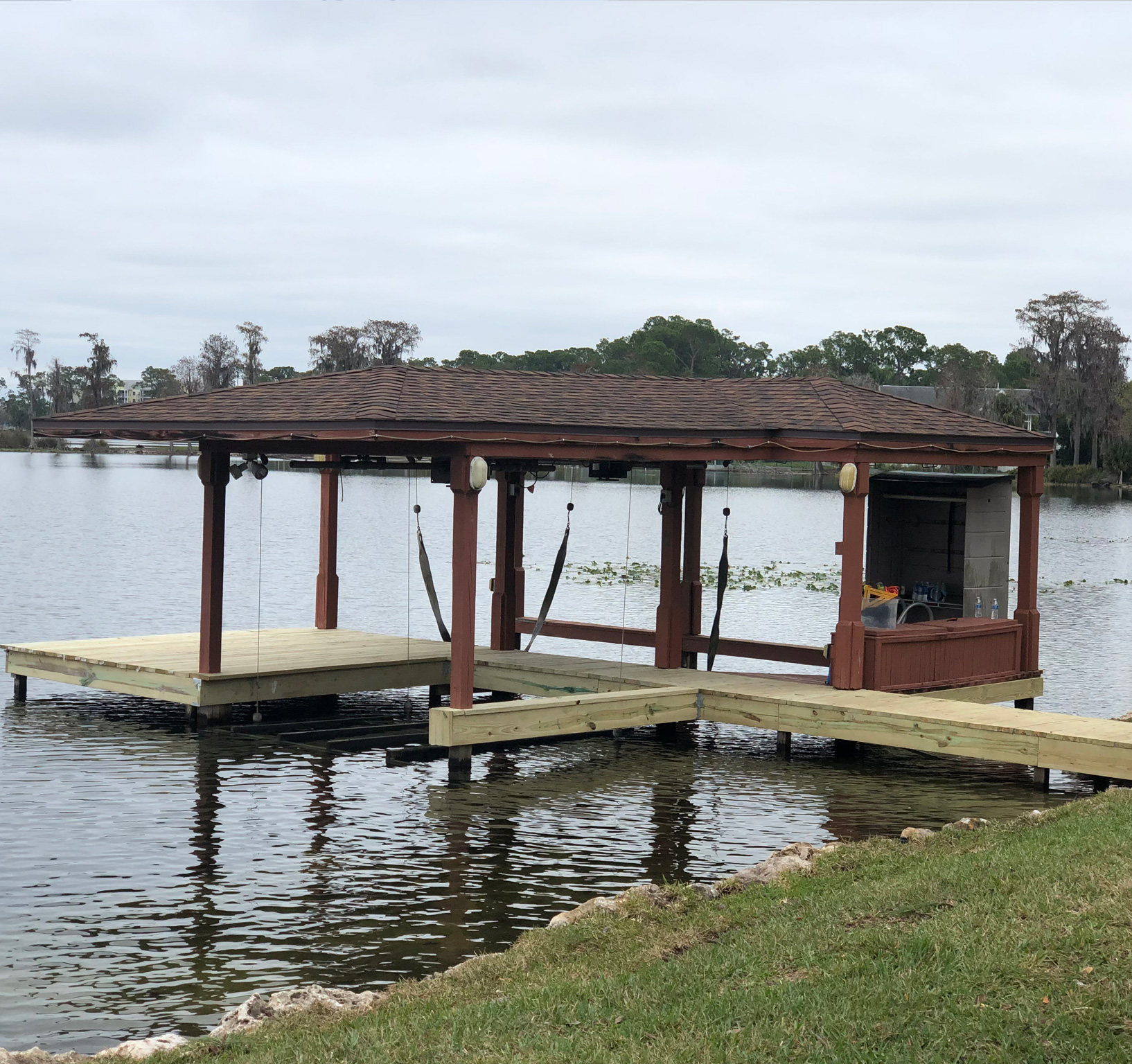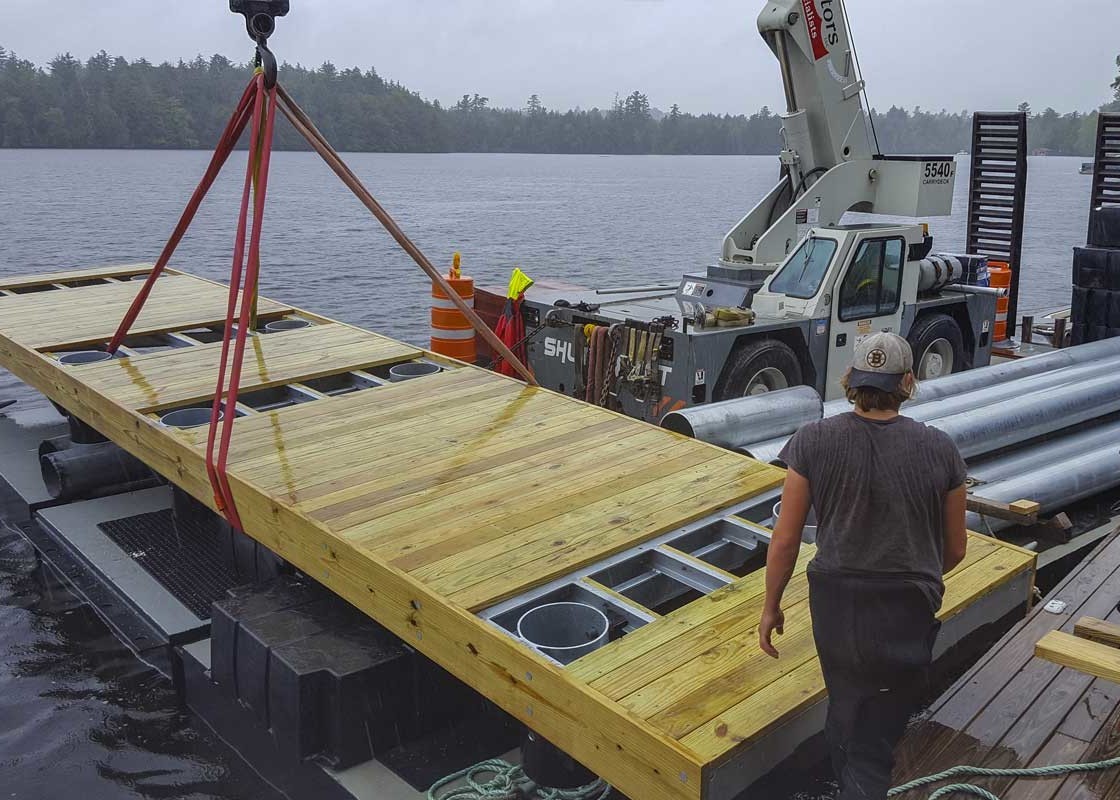Effective Dock Fixing Techniques: Making Sure Architectural Honesty
Ensuring the structural honesty of anchors through reliable fixing strategies is critical for the durability and safety of marine centers. This entails a multi-faceted technique starting with comprehensive inspections making use of advanced technologies like finder devices and remotely ran vehicles (ROVs) to discover both visible and hid problems. Subsequently, selecting the ideal fixing materials, such as corrosion-resistant alloys and composite materials, is vital for toughness. Structural support techniques, including the execution of cross-bracing systems and load-distribution plates, play a crucial role in mitigating stress and anxiety points. The significance of these methods comes to be obvious when discovering sophisticated fixing methods and preventative upkeep strategies.
Assessing Dock Damage
Examining dock damage is a crucial very first action in ensuring the structural stability and safety and security of any docking facility. This initial examination entails a thorough inspection to identify both concealed and noticeable problems. Trick facets to check out include the dock's foundation, pilings, decking, and hardware. Each component should be inspected for indications of wear, rot, rust, or various other types of deterioration that might endanger the architectural stability.
Architectural engineers or qualified inspectors commonly execute these assessments making use of specialized tools and techniques. Underwater inspections could utilize sonar tools or from another location operated lorries (ROVs) to identify immersed damage. Over water, visual inspections are enhanced by utilizing moisture meters and various other diagnostic tools to reveal underlying problems not right away visible to the nude eye.

Finding Repair Service Materials
Picking the proper repair service materials is a critical action in the dock repair process, one that straight influences the longevity and efficiency of the repaired framework. Material selection need to be driven by elements such as ecological conditions, load-bearing requirements, and compatibility with existing dock parts.
Along with wood, composite products are progressively prominent due to their sturdiness and low maintenance needs. Compounds, normally made from a mix of plastic and timber fibers, offer superb resistance to rot, insects, and UV damages. For metal anchors, choosing corrosion-resistant alloys such as galvanized steel or marine-grade light weight aluminum is vital to protect against rust and make certain structural honesty in saline water conditions.
Epoxy resins and marine-grade sealers are essential for fixing splits and sealing joints, supplying a water-proof barrier and improving the dock's total strength. By thoroughly picking top quality products, dock repairs can accomplish resilient results, thus guarding against future deterioration and making certain secure, trusted usage.
Architectural Support Techniques
Effective structural support strategies are important in making sure the stability and longevity of dock repairs. This approach is specifically efficient for docks exposed to hefty lots or extreme environmental problems.
An additional crucial strategy is the application of fiber-reinforced polymers (FRP) These materials offer high strength-to-weight proportions and exceptional resistance to rust, making them optimal for strengthening wooden or concrete docks. FRP can be applied in sheets or strips and adhered with epoxy materials to enhance architectural honesty.
Bracing and securing systems likewise play an important function in structural reinforcement. Cross-bracing, using steel or wooden beams, can neutralize side pressures, minimizing swaying and movement. Securing systems, such as helical piers or driven stacks, Read Full Article offer a stable structure by transferring loads to much deeper, much more secure dirt layers.
Lastly, the assimilation of load-distribution plates can assist distribute weight extra uniformly throughout the dock's surface, mitigating local tension factors. These methods jointly ensure that anchors continue to be robust and risk-free, qualified of enduring the roughness of their functional environment.
Advanced Fixing Approaches

Another advanced technique entails undersea welding, which permits for fixings to be performed without the demand to dewater the location. This method is particularly advantageous for dealing with structural problems in submerged dock elements, making sure marginal disturbance to operations. Boosted welding strategies, combined with robotic systems, deliver precision and integrity, therefore expanding the life expectancy of the dock.
Additionally, cathodic protection systems are implemented to prevent deterioration in metal dock structures. By utilizing sacrificial anodes or impressed existing systems, these methods efficiently alleviate the electrochemical processes that lead to product degeneration.
Finally, advanced surveillance innovations, such as structural health surveillance (SHM) systems, supply real-time data on the problem of dock frameworks. These systems enable aggressive maintenance and timely treatments, eventually guaranteeing the long-term structural integrity of the dock.
Upkeep and Prevention
Upkeep and prevention are basic ideas that underpin the longevity and security of dock structures. Routine inspections are extremely important, permitting very early detection of damage, prospective weak points, and environmental impacts. A positive approach, including regular checks for rust, rot, and structural changes, mitigates expensive fixings and prolongs the dock's functional life.
Safety nets need to consist of applying safety layers to metal elements to secure against corrosion and making use of cured wood to stand up to degeneration. Additionally, guaranteeing correct water drainage and ventilation can stop water buildup, which is a common cause of architectural destruction. Including quality materials and sticking to supplier standards throughout construction and repair work phases likewise play critical duties in enhancing sturdiness.

Training employees in dock upkeep finest practices ensures regular application of safety nets. Leveraging technological breakthroughs, such as drones for assessments and sensors for real-time monitoring, can better improve upkeep efforts. By focusing on maintenance and prevention, dock proprietors can guarantee architectural stability, operational safety and security, and affordable management over the dock's life-span.
Final Thought
To conclude, preserving the structural stability of marine centers necessitates detailed dock repair strategies. Extensive inspections utilizing innovative tools uncover both noticeable and concealed damages, while the option of suitable fixing materials improves durability. Carrying out architectural reinforcement techniques addresses stress and anxiety points successfully. Advanced repair methods, paired with regular maintenance methods, make certain the dock remains risk-free and functional under varied ecological problems. Adopting these methods dramatically prolongs the life expectancy and performance of aquatic infrastructure.
Making certain the architectural integrity of anchors via reliable fixing techniques is critical for the durability and safety and security of marine facilities.Choosing the proper fixing materials is a critical action in the dock restoration process, one that directly influences the durability and efficiency of the fixed framework.Reliable architectural support techniques are crucial in guaranteeing the stability and longevity of dock repair work. By focusing on maintenance and prevention, dock owners can ensure architectural honesty, functional security, and affordable management over the dock's lifespan.
In conclusion, keeping the architectural stability of marine centers requires extensive dock repair work techniques.
Comments on “DIY Tips for Simple Dock Repairs You Can Take Care Of”